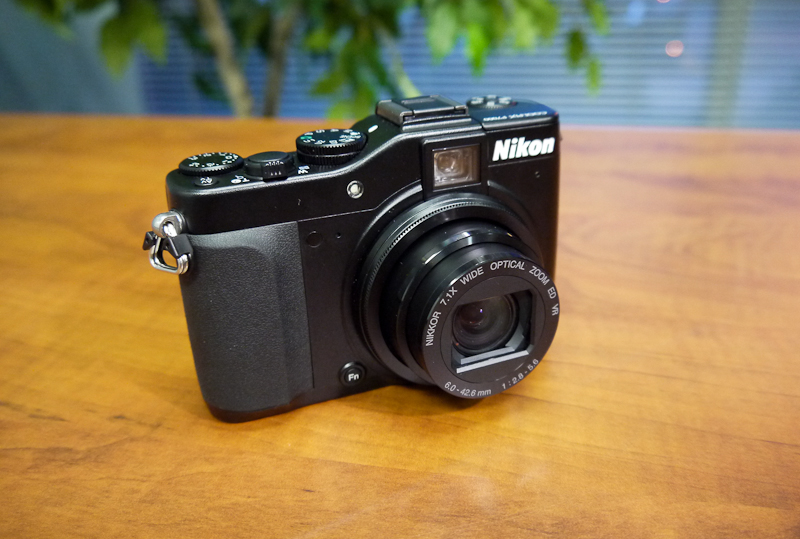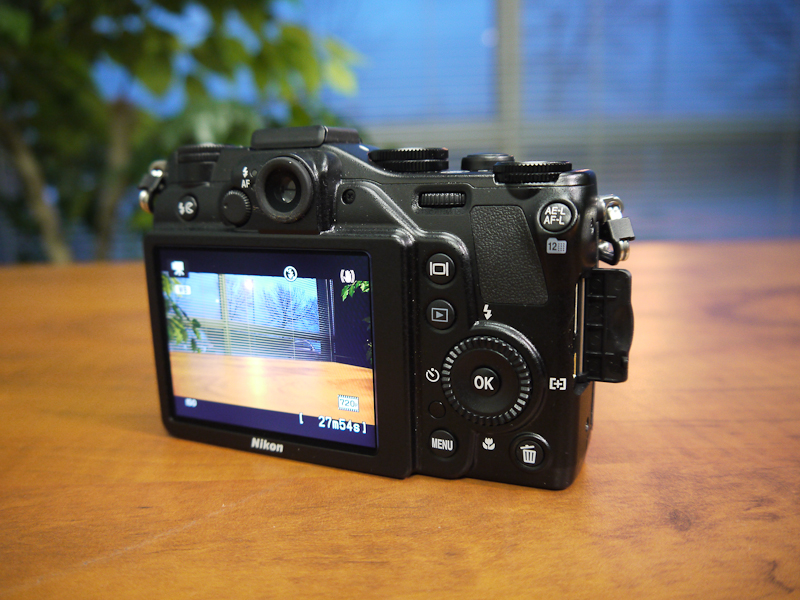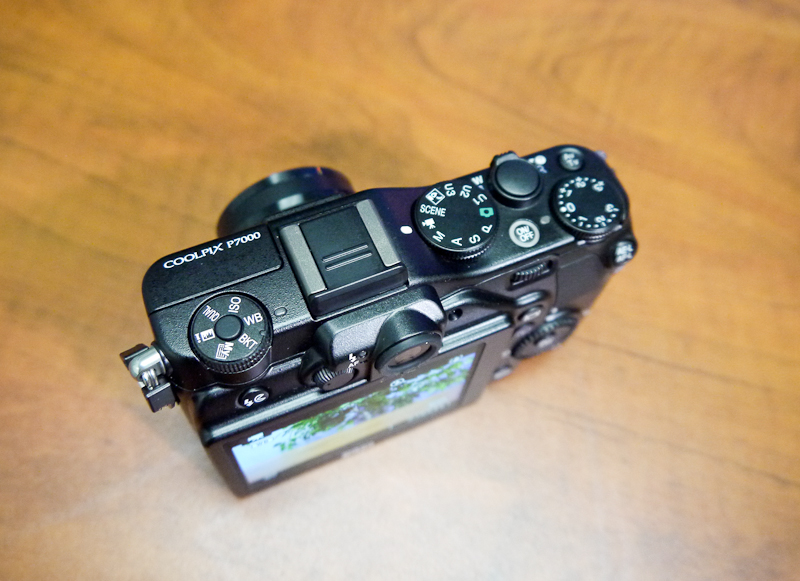Nikon P7000 review
In the past, Nikon has lagged behind Canon in the realm of the advanced point-n-shooter. It doesn’t help that this category itself has always proven to be contradictory in nature. Compact point-n-shooters have mainly been targeted to general consumers who want a small and light camera that they can quickly whip out and snap a few quick pictures. So generally, these cameras are very inexpensive with very basic controls outside of the usual automatic features which often are the main selling points of this type of camera. The advanced point-n-shooter came about as more regular consumers started growing out of their simple cameras and wanted something with a few more advanced features. On top of that, more professional photographers were clamouring for a smaller portable alternative to their DSLRs that they could carry around in their bags and/or pockets without much fuss yet as well give them all the manual control they were used to on the larger DSLRs. When Canon launched their G series of Powershot cameras, they quickly became the favourite of advanced amateurs and professional photographers alike with a smart, ergonomic design coupled with the ability to fully control every function of the camera manually.
With the release of the P7000, Nikon looks to take aim squarely at Canon’s lead in this niche. We finally got a hold of one to test and put through its paces. Has Nikon finally released a camera that can compete with the Canon G12?
Firstly, let me get the obvious out of the way. The P7000 really looks like a Canon Powershot G camera. Looking nothing like the previous P6000 (well, both cameras were black, but that’s about it), the P7000 takes it’s design cues from Canon’s own G12, which is not a bad thing because a lot of people love the aesthetics of the Powershot G cameras. Nikon has really stepped up their game and it shows. The buttons and dials are laid out very well and are easily accessible. The LCD screen is bright and very sharp, a must if you plan on using manual focusing.
The AF (AutoFocus) is really fast and locks onto the subject very well. I noticed that the P7000 has face-tracking and 3D tracking, much like their larger DSLRs, which comes in very handy, especially if you’re shooting movies at 720p. The ISO sensitivity goes from 100-6400 which is a bit higher than the Canon which tops out at 3200. However, the Canon G12 does have more in-between ISO steps than the P7000. This can be either a good or bad thing, depending on your preferences. And as you’d expect from Nikon, the P7000 handles low light shooting better than the Canon, especially with their advanced noise suppression algorithms.
The 28-200mm lens is awesome! Clear, sharp it has a great reach that suits a “compact”-styled camera. Colour reproduction is what you’d expect from Nikon, very accurate especially in the red, greens and blues. The metering is TTL exposure metering using the 2,016-pixel RGB sensor found in their newer DSLRs. The Active D-Lighting works great when you find yourself in very complex lighting situations where extreme conditions will normally underexpose one side of the shot and overexpose another. You will find a much more precise metering and it will retain much of the colours that you see in the shot. Walking through the Royal Ontario Museum in Toronto, the lighting was very extreme indeed and the Active D-Lighting came in handy to correctly measure and expose what would be a headache of a shot to take. The best part about a camera like this are it’s manual controls. Every feature of this camera can be set manually, which is a must for the serious amateur or professional. This is definitely not for the faint of heart as everything can and must be set by hand. If you’re mainly used to the auto features of point-n-shooters, then take your time to learn what each control does. Once you get the hang of them, the possibilities are endless and the results can be simply stunning.
My only real gripe about the P7000 is that it lacks a dedicated knob or dial for changing the ISO settings; with each camera ISO clearly marked on the dial. It may not sound like much at first, but when you’re walking around and suddenly you see something you want to take a picture of, being able to very quickly change the camera ISO by simply turning or spinning an ISO dial instead of navigating through menus is extremely useful. On the P7000, you turn the big selection dial that’s situated right beside the LCD to change the ISO, but since that also dial serves other functions, you have to make sure it’s set to change the ISO. I really love this feature on the Canon Powershot G cameras and I wish Nikon did the same thing.
Overall, the Nikon P7000 is a great little camera. Small and fairly lightweight, it’s a fast little shooter when you need to rely on it’s auto settings in a blink of an eye; but as well it gives the advanced amateur/pro user all the manual control they need to take the types of pictures they like to shoot. The P7000 comes very, very close to matching Canon’s G12, but without a dedicated ISO dial with the ISO numbers clearly marked –as is the Canon– I would place the Nikon P7000 just a hair below the Canon G12, but that’s just a hair, and is a lot closer than Nikon has been in this market for a long time.
The all important spec list:
- Image sensor: 16.2 megapixel CMOS sensor (DX format)
- Dust-reduction system: Image Sensor Cleaning
- Storage media: SD (Secure Digital), SDHC and SDXC memory cards
- Double slots: Slot 2 can be used for overflow or backup storage or for separate storage of copies created using NEF+JPEG; pictures can be copied between cards
- Viewfinder: Pentaprism; Frame coverage: approx. 100%, Magnification: approx 0.94x
- Shutter speed: 1/8,000 to 30 s in steps of 1/3 or 1/2 EV
- Flash sync speed: X = 1/250 s; synchronizes with shutter at 1/320 s or slower
- Release mode: S (single frame), CL (continuous low speed), CH (continuous high speed), Q (quiet shutterrelease), (self-timer), (remote control), MUP (mirror up)
- Continuous shooting up to 6 fps
- Exposure metering: TTL exposure metering using 2,016-pixel RGB sensor
- Exposure compensation: -5 to +5 EV in increments of 1/3 or 1/2 EV
- ISO sensitivity: ISO 100 to 6400 (ISO 25600 equivalent)
- Active D-Lighting :Can be selected from Auto, Extra high, High, Normal, Low or Off
- Focus Modes: Single-point AF; 9-, 21- or 39-point dynamic-area AF, 3D-tracking, auto-area AF
- Built-in flash: Auto flash with auto pop-up • Manual pop-up with button release • Guide Number: Approx. 12 m
- Live View lens servo: Autofocus (AF): Single-servo AF (AF-S); full-time-servo AF (AF-F) • Manual focus (M)
- AF-area mode (Live View): Face-priority AF, wide-area AF, normal-area AF, subject-tracking AF
- Movie: 1,920 × 1,080 @ 24 fps, 1,280 × 720 @ 30 fps • MOV file format (H.264/MPEG-4) • Built-in monaural or external stereo microphone; sensitivity adjustable
- Monitor: 7.5 cm (3-in.), approx. 921k-dot (VGA), TFT LCD with 170° viewing angle
- Playback: Full-frame and thumbnail (up to 72 images or calendar) playback with playback zoom, movie playback, slide show, highlights, histogram display, auto image rotation and image comment
- USB: Hi-Speed USB
- HDMI output: Type C mini-pin HDMI connector
- Accessory terminal: Remote Cord MC-DC2 (available separately), GPS Unit GP-1 (available separately)
- Audio input: Stereo mini-pin jack (3.5-mm diameter)
- Battery: One Rechargeable Li-ion Battery EN-EL15
- Battery pack: Optional Multi-Power Battery Pack MB-D11 with one Rechargeable Li-ion Battery ENEL15 or six R6/AA size alkaline, NiMH or lithium batteries
- Dimensions (W x H x D): Approx. 132 × 105 × 77 mm
- Weight: Approx. 690 g (1 lb. 8.3 oz.) camera body only; approx. 780 g with battery and memory card but without body cap























734992 288412genuinely excellent post, i definitely adore this web site, maintain on it 668316